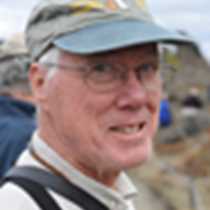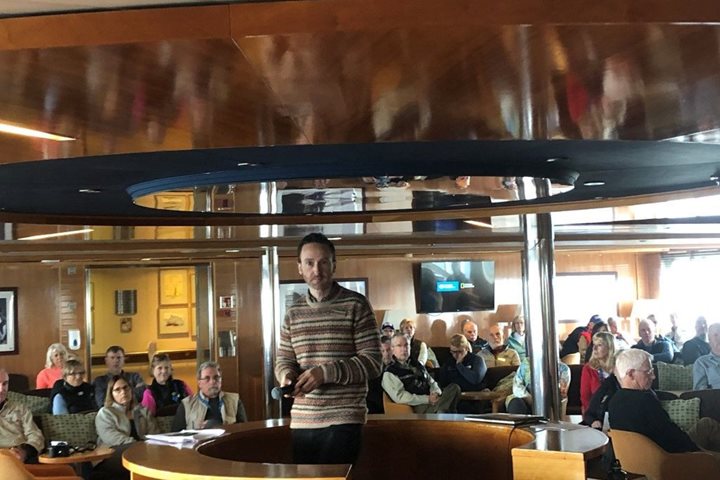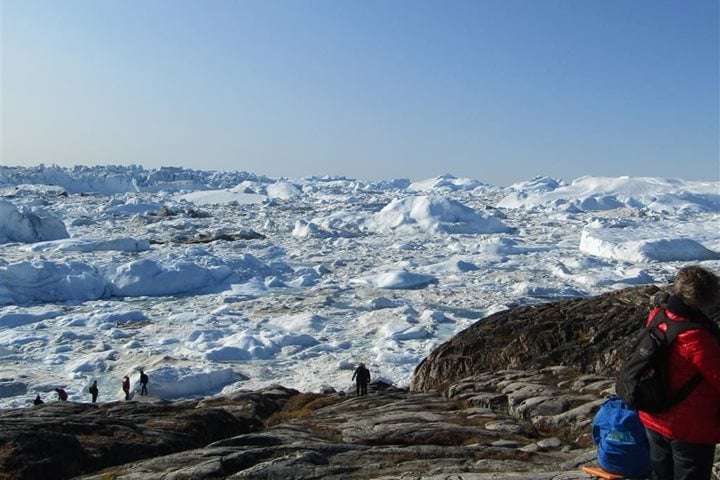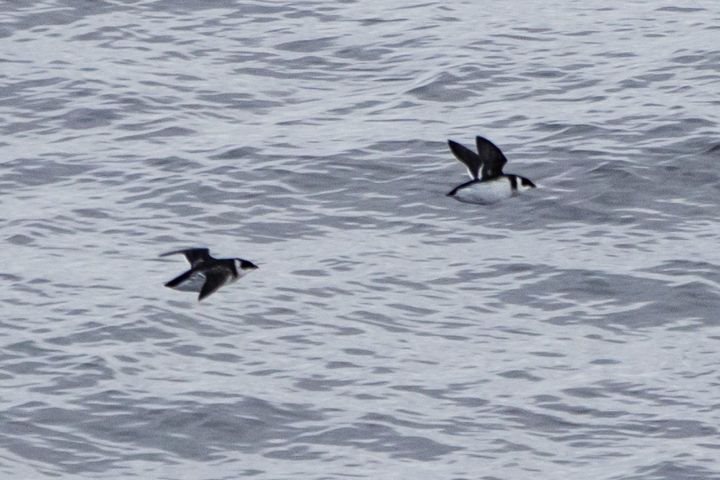We have completed our visit to western Greenland and our passage across Baffin Bay to reach the Canadian North. In 1999 the former Canadian Northwest Territories was split; the portion occupied by the Inuit became Nunavut ("Our Land" in Inuktitut). All but the tiniest corner of Nunavut is above the treeline, hence experiencing the Arctic conditions that the Inuit, over generations, have mastered.
The Inuit of Nunavut are proud to have their own homeland, and proud of their culture and traditions. We saw this clearly when we visited the community of Pond Inlet, on northern Baffin Island. We stepped ashore dry-shod after crossing the new "dry lander" (past guests have a surprise waiting when next they travel on the National Geographic Explorer). We were greeted by Inuit women wearing traditional clothing made of furs.
Our group split. Some chose to walk across the tundra and stretch their legs after the day at sea. Before the Canadian government built the hamlet of Pond Inlet, Inuit people lived nearby. They occupied sod houses during the winters and moved into skin tents for the summers, allowing the sod dwellings to air out. The remains of sod houses, and of rings of stones that once held down the edges of their tents against the Arctic wind, remain dotted over the landscape.
Others of our group followed a local guide to the Community Centre for a demonstration of traditional Inuit drum-dancing, games of strength and agility, and throat singing. These helped the people pass the long, dark Arctic night. They could be joyful or they could be competitive, used to resolve disputes. Now they are definitely joyful, linking the people of Pond Inlet to their past.
We departed Pond Inlet and headed further north, through the spectacular Arctic landscape of Eclipse Sound and then Navy Board Inlet, a narrow passage that separates Baffin and Bylot islands. Somewhat unexpectedly, the call came that we had spotted the first polar bear of our voyage. The animal appeared to be on the most barren of land. Could it possibly be getting any, if not enough to eat? Probably not. We watched our bear amble steadily northward, an off-white dot on the austere landscape. Perhaps, in heading north, it might find a patch of residual sea ice and access to the richness of food found there. Meanwhile, its keen sense of smell might lead it to a dead seal or whale that has washed ashore, enabling it to survive until new ice forms in autumn. Winter is their time of plenty; a polar bear on land is a hungry polar bear.
At the northern tip of Bylot Island is Cape May, where many thousands of thick-billed murres breed. Each pair claims a tiny spot on a narrow ledge where they squeeze between their neighbors to incubate their single egg. Now, the eggs have hatched and the parent birds are busy bringing food to the growing young. Looking into the sky, we saw hoards of birds on the wing, each returning to its nest site with a load of small fish before heading out to sea to do it again, male and female, coming and going. It takes all of the efforts of both parents to raise a single young. Soon, long before the young birds are able to fly, they will leap from the ledges to follow their fathers out to sea, and the cliffs will fall silent for the winter. After spending the winter apart, the adults will meet at the cliffs again next year to repeat the process. It was a spectacular sight, and evidence of the richness of the Arctic marine environment. And so to bed.







